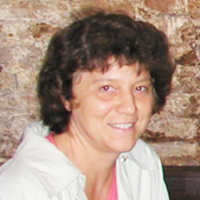Is there an ideal blood pressure during cardiopulmonary bypass to prevent postoperative cerebral injury? – What does the recent evidence say?
Published on: 21st November, 2018
OCLC Number/Unique Identifier: 7943236620
Post cardiac surgery stroke is a devastating complication with an incidence as high as 50%1. The association between intra-operative mean arterial blood pressure (MAP- better called linear blood pressure) during cardiopulmonary bypass (CPB) and the development of postoperative stroke-as diagnosed by neuroimaging- and of cognitive dysfunction (POCD) is controversial. This is due to differences in the study populations, stroke assessment tools, operation and conduction of MAPs, variations in neurocognitive testing and duration of follow up. As a result there is a gap in the knowledge on an ideal MAP as a preventive measure of post CPB stroke and POCD.
Navigating Weight Management with Stevia: Insights into Glycemic Control
Published on: 27th February, 2024
Stevia is a natural sweetener that has gained attention as a potential sugar substitute for glycemic control and weight management. Extensive research has shown that high sugar consumption is linked to obesity, dental caries, and other health issues. Stevia, derived from the Stevia rebaudiana plant, offers sweetness without calories and has a favorable glycemic profile. Studies have demonstrated its effectiveness in regulating blood glucose levels and reducing overall sugar and caloric intake. Consumer attitudes suggest a positive reception of Stevia as a sugar substitute among health-conscious individuals. However, further research is needed to understand its long-term effects and consumer sentiments. Future investigations should prioritize human clinical trials, targeted studies in diabetic populations, and exploration of Stevia’s interaction with gut microbiota, among other aspects. Stevia shows promise as a health-conscious alternative in glycemic control and weight management.
Intentıonal reımplantatıon of hopeless teeth: Cases serıes
Published on: 31st October, 2020
OCLC Number/Unique Identifier: 8872657975
Intentional replantation is an alternative for the treatment of advanced periodontal destruction of the anterior teeth. Systemically healthy three female patient was referred to our clinic with functional complaints. Diagnosis were chronic periodontitis and class III mobility was noted at the mandibular incisors with complete periodontal attachment loss. After phase I periodontal treatment periodontally involved teeth were extracted, endodontic treatment accomplished, the teeth were replanted and fixed to its place with fiber reinforced composite splint. At the end of 2 years tooth was in function with alveolar bone gain. Intentional replantation provided long-term maintenance of patient’s own teeth.
Autoantibodies in Autoimmune Addison’s Disease: Why are they Important?
Published on: 26th August, 2024
Primary adrenocortical insufficiency or Addison’s disease (AD) is a rare, life-threatening condition with different aetiologies, but the most common cause is autoimmune destruction of the adrenal cortex. Autoimmune Addison’s disease (AAD) can present as an isolated condition or associated with others, as part of an autoimmune polyglandular syndrome (APS). The aim of this work is to investigate and emphasise the roles of autoantibodies in adrenocortical insufficiency, through the description of three clinical cases.
Prescribing Inertia or Not? Quantitative Investigation of Loop Diuretics Prescribing after Palliative Care Consultation among Patients with Heart Failure
Published on: 27th August, 2024
Purpose: Loop Diuretics (LD) are the first-line pharmacotherapy to address Heart Failure (HF)-associated edema and dyspnea. However, LD causes frequent urinary, resulting in inconvenience and possibly undermining the quality of life. While prescription adjustment is an essential part of Palliative Care Consultation (PCC), it remains unclear how PCC affects the deprescribing of diuretics for adults with HF. Methods: We conducted a pre-post analysis of the percentage of HF patients who were prescribed LD in a national Electronic Health Record (EHR) database 12 months before and after the first PCC. The difference in prescription rates between the periods was determined. Adjusted associations of post-PCC LD prescription with pre-PCC LD prescription and patient’s characteristics, insurance, provider type, and clinical factors were quantified.Results: From 2010 to 2018, 5,969 patients with newly diagnosed HF received at least one PCC, among whom 2,539 (42.5%) were prescribed LD before and 1,552 (26.0%) after their first PCC. Despite a decrease in LD prescription rate encompassing the date of PCC, post-PCC LD prescribing was strongly associated with pre-PCC prescribing (aOR[95%CI] 3.2[2.8,3.7]) and varied by age at first PCC, year of HF diagnosis (aOR[95%CI] 2.1[1.9,2.4]) and months from HF diagnosis to first PCC. While our finding demonstrates reduced polypharmacy associated with PCC, the strong association between pre- and post-PCC indicates reverse therapeutic inertia. Future research should investigate the benefits and costs of polypharmacy among specific patient groups to help develop personalized treatment for HF.
Host biomarkers for early diagnosis of infectious diseases: A comprehensive review
Published on: 5th June, 2019
OCLC Number/Unique Identifier: 8165317456
Biomarkers have been used in the diagnosis of disease and other conditions for many decades. There are diverse ranges of analytical targets, including metabolites, nucleic acids and proteins were used as a biomarker. Clinical diagnoses already rely heavily on these for patient disease classification, management, and informing treatment and care pathways. For that there is always a need of rapid and point of care test. However, until fairly recently, studies of biomarker efficacy in a clinical setting were mainly limited to single or dual use, and the landscape was complex, confused, and often inconsistent. Few candidates emerged from this somewhat clouded picture: C-reactive protein, procalcitonin (PCT) for sepsis, ADA for mycobacterium tuberculosis and a Circulating miRNAs serve as molecular markers for diverse physiological and pathological conditions.
Large Cystic Dilatation of the Common Bile Duct
Published on: 19th March, 2024
Li B, Chen BW, Xia LS. The Initial Experience of Laparoscopic Management for Type VI Choledochal Cyst in Children. J Laparoendosc Adv Surg Tech A. 2024 Mar;34(3):280-283. doi: 10.1089/lap.2023.0229. Epub 2023 Oct 16. PMID: 37844069.
Dumitrascu T, Lupescu I, Ionescu M. The Todani classification for bile duct cysts: an overview. Acta Chir Belg. 2012 Sep-Oct;112(5):340-5. doi: 10.1080/00015458.2012.11680849. PMID: 23175921.
Dutta S, Jain A, Reddy A, Nelamangala Ramakrishnaiah VP. Anomalous Pancreaticobiliary Duct Junction in an Unusual Case of Synchronous Gallbladder and Bile Duct Malignancy. Cureus. 2021 Feb 13;13(2):e13331. doi: 10.7759/cureus.13331. PMID: 33738174; PMCID: PMC7959653.
Xia HT. Standardized Surgical Management for Cystic Dilation of the Bile Ducts Based on Clinical and Pathological Studies: A Narrative Review. Gastroenterol Res Pract. 2020 Sep 15;2020:3432786. doi: 10.1155/2020/3432786. PMID: 33014038; PMCID: PMC7512076.
Study on the Molecular Mechanism of Antioxidant Health Effect of Tuna Dark Meat Enzymatic Polypeptides
Published on: 21st March, 2024
In order to study the molecular mechanism of the antioxidant effect of enzymatically hydrolyzed tuna dark meat peptides, this article uses alkaline protease to enzymatically hydrolyze tuna dark meat, and at the same time performs peptide sequencing using matrix-assisted laser dissociation time-of-flight mass spectrometry (MALDI TOF/TOF). Discovery Studio (DS) performed molecular docking. Finally, the antioxidant effect was verified through DPPH clearance experiments. The results show that the dominant peptide sequences in the tuna dark meat hydrolyzed polypeptides are LAPGQ, GGGDPI, and PLRLP; through molecular simulation methods (Discover Studio, DS), the potential target of the above-mentioned enzymatic polypeptides was screened out to be Keap1, thus predicting antioxidant activity. It provides theoretical support for further research on enzymatic peptides. Through DPPH clearance experiments, it was found that both the enzymatic hydrolysate and LAPGQ, GGGDPI, and PLRLP have antioxidant activity, confirming their effects.
Uterine precursor lesions in patients with incidental nodal lymphangioleiomyomatosis: A report of 4 cases
Published on: 14th December, 2020
OCLC Number/Unique Identifier: 8514665038
Uterine sections from 6 patients with incidental nodal lymphangioleiomyomatosis (LAM) were examined for LAM lesions by screening these sections with cathepsin K immunohistochemistry (IHC) stains. The hysterectomy specimens were all concurrent with the lymph node dissections in which the nodal LAM was discovered. In 4 of 6 patients microscopic lesions of pre-LAM were identified and confirmed by IHC staining for HMB-45 and beta-catenin. All lesions were grossly inapparent and also inapparent by routine hematoxylin and eosin stains. Three variants of pre-LAM lesions were identified. None of the pre-LAM lesions had an associated lymphatic proliferation. It is proposed that these pre-LAM lesions gave rise to the incidental nodal LAM lesions. Furthermore, it is suggested that the absence of an associated lymphatic proliferation associated with these lesions may be a factor in the attenuated potential for spread and the only rare association of these nodal lesions with pulmonary LAM.
Drug Abuse and Mental Illness in Erigavo Mental Hostiptal, Erigavo, Somalia
Published on: 10th September, 2024
Mental illness is an international health crisis that puts the lives of over three hundred million people (Four percent of the world’s population) at risk. The study was conducted at the Erigavo Mental Hospital in Somaliland and its main focus was the bond between substance abuse and mental illness. The research was to check the influence of the different drugs, screen mental health problems, and draw a link between drugs and mental illness. The sources of the quantitative data were a total of 27 employees and managers. This study is cross-sectional. We employed the measure of the magnitude and direction of a linear relationship between two variables with the Pearson correlation coefficient. The outcomes that were acquired show that there was use and particularly abuse of khat, substance smoking, and alcohol consumption, the score means of which were quite high. The investigation results, however, imply that through drug use and other forms of alcohol drug abuse, one of them counter various mental health problems. Furthermore, the addicted people demonstrated the tendency to use force in their attempt to solve the conflicts and to experience the highest degree of tension, with the mean score of the former giving 4.11 while the standard deviation of the latter giving 1.086, thus this shows the mental impact of drug use on the inhabitants of Erigavo. The main result of the study was the strong, positive relationship between drug addiction and mental illness, which became evident through an r - value of 0.509 and a p - value of 0.559. It means that those people who are involved in drug misuse are the ones who are likely to have mental health disorders. Based on the findings of the study, we suggest a combination of measures to recover drug addiction and mental illness. This consists in strengthening prevention. The study that lays the groundwork for suggestions, involves an approach that is holistic in nature. The main ideas of preventing drug usage, psychological health care, enhancing mental health services, and working towards certified professionals are key integrated activities of the whole concept. The hospital, thus, will be in a better position to eliminate the two major disease components namely; drug abuse and mental ailment. Thus, in this way, with the help of the new treatment approaches, a hospital provides and their patients who are quite likely to recover and lead healthy.




